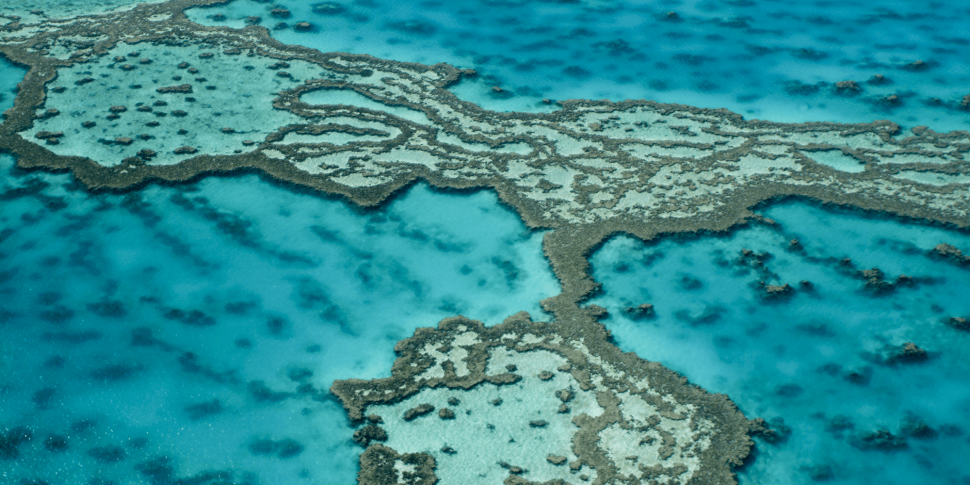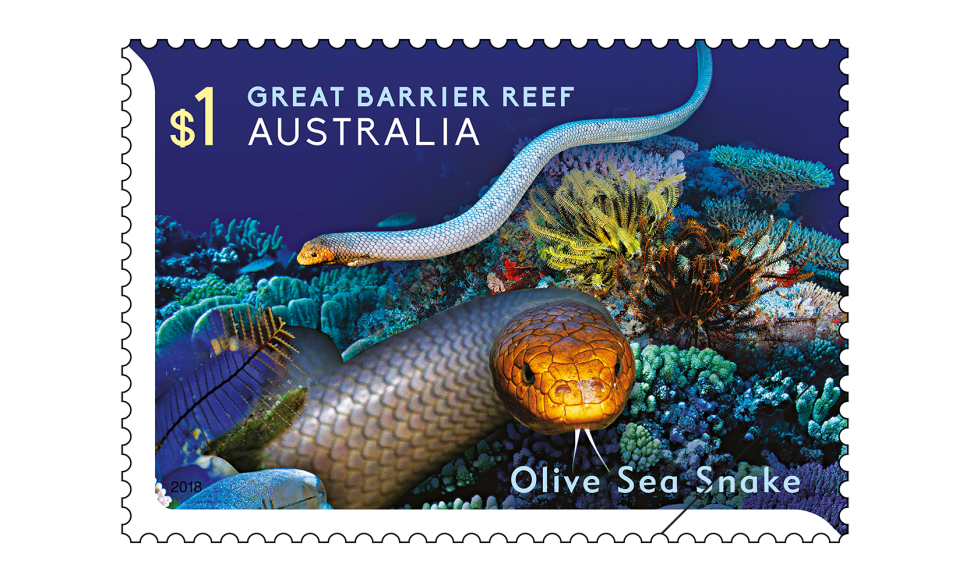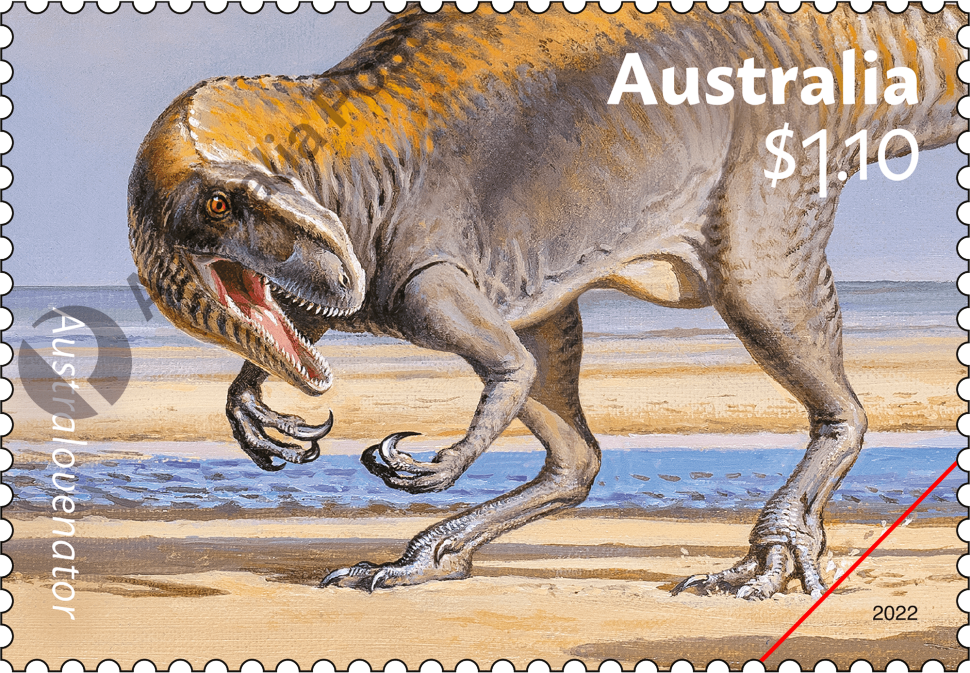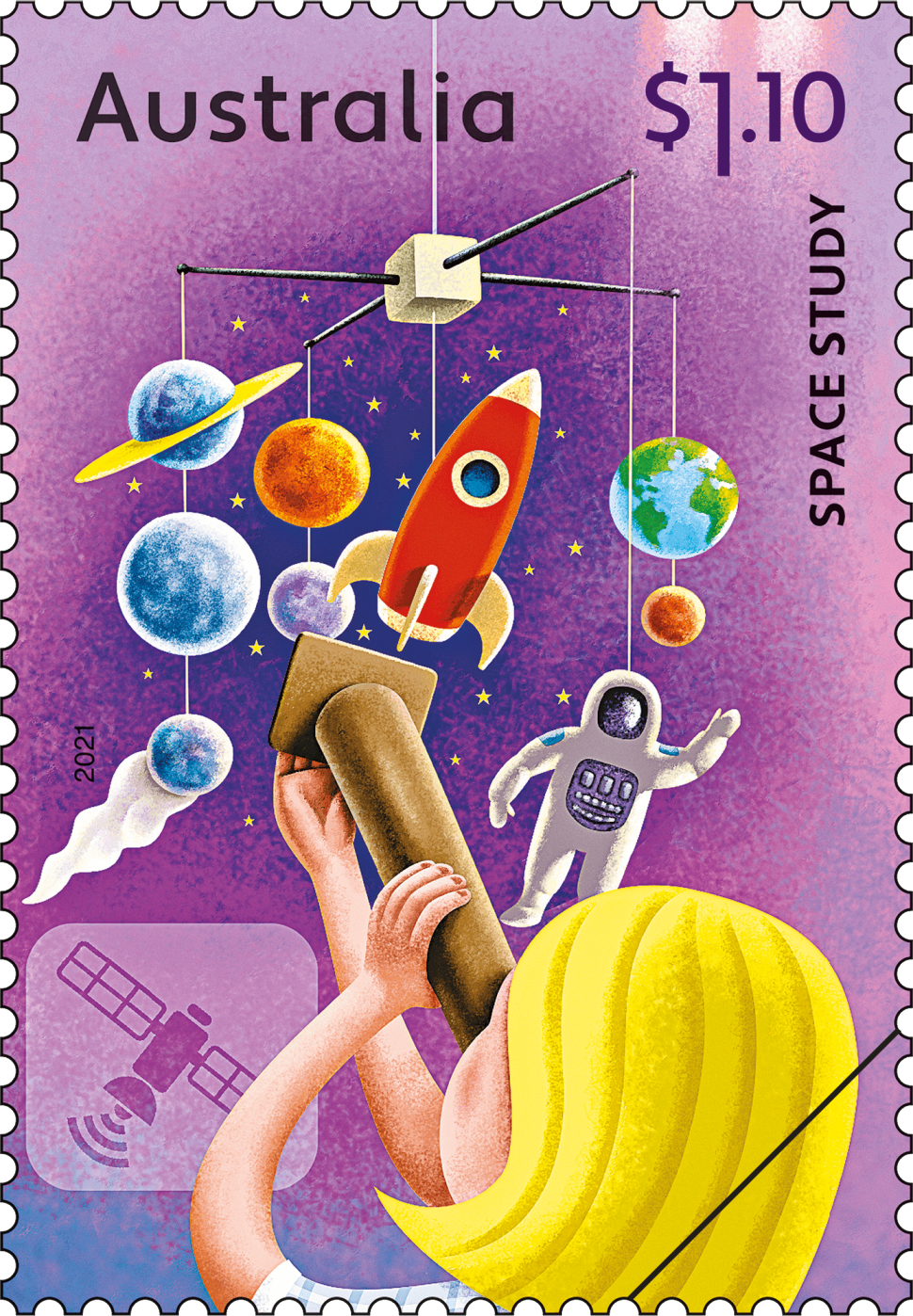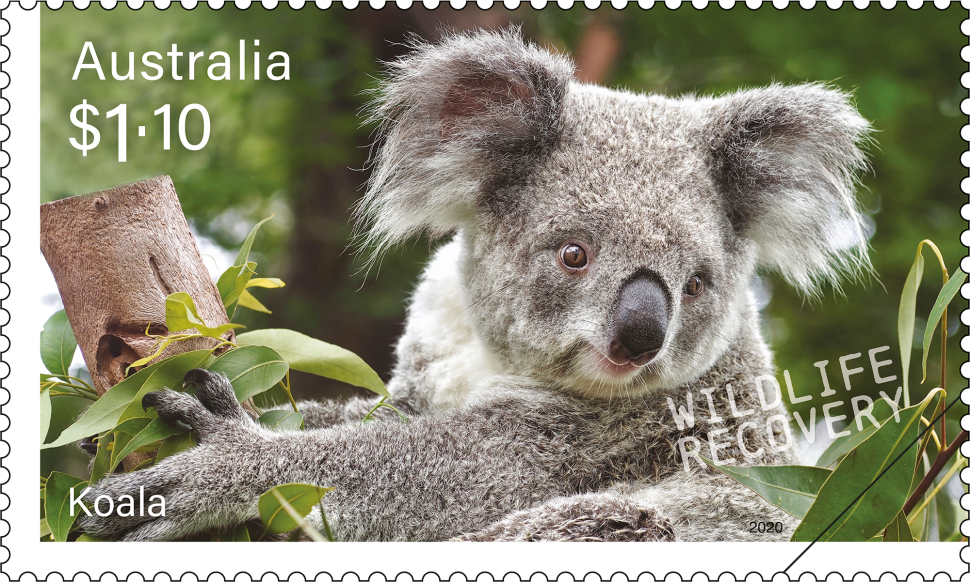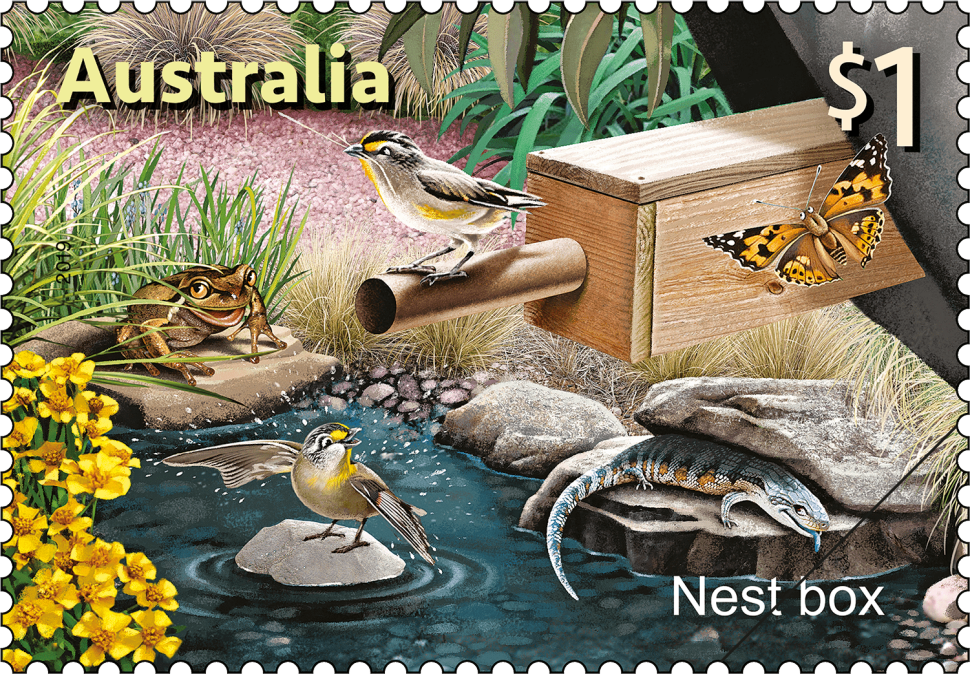The 2018 Stamp Collecting Month features one of the world’s most remarkable natural wonders, Australia’s Great Barrier Reef. Situated off the eastern coast of Australia in the Coral Sea, the Great Barrier Reef is the largest coral reef system in the world, comprising more than 2,900 individual reefs and 900 islands. It stretches for over 2,300 kilometres, from the northern tip of Queensland and south to Fraser Island. The largest living structure on the planet, the Great Barrier Reef is even visible from space.
The unique values of the Great Barrier Reef were recognised in 1975 when the Australian government created the Great Barrier Reef Marine Park in order to protect the Reef. In 1981 the Reef was inscribed on the UNESCO World Heritage List.
The Great Barrier Reef is one of Australia’s main tourist destinations, attracting millions of visitors every year. However, the Great Barrier Reef is in urgent need of protection, its major threat being climate change. Warmer waters cause phenomena such as coral bleaching. In 2016 and 2017 scientists determined that nearly two-thirds of the Great Barrier Reef was affected by this phenomenon, resulting in the death of up to 50 per cent of the corals in those affected areas. The Australian government and other organisations including the Great Barrier Reef Foundation are working to save the Great Barrier Reef for future generations. This year has been declared the International Year of the Reef.
An extraordinary range of marine creatures is supported by the Reef’s complex ecosystem. These include 600 types of soft and hard corals, more than 100 species of jellyfish, 3,000 varieties of molluscs, 500 worm species, 1,600 types of fish, 133 species of sharks and rays and more than 30 species of whales and dolphins.
Products released in this issue
- Minisheet
- First day cover (blank, gummed, minisheet)
- Stamp pack
- 3D stamp pack
- Maxicards
- Booklets of 10 x $1 (self-adhesive)
- Booklets of 20 x $1 (self-adhesive)
- Medallion covers x 3
- Prestige booklet
Technical specifications
- Issue date
- 1 August 2018
- Issue withdrawal date
- 28 February 2018
- Denominations
- 5 x $1, 1 x $2
- Stamp design
- Sonia Young, Australia Post Design Studio
- Product design
- Sonia Young, Australia Post Design Studio
- Printer - gummed
- EGO
- Paper - gummed
- Tullis Russell
- Paper - self-adhesive
- Securepost MC 90
- Printing process
- Offset lithography
- Stamp size
- 37.5mm x 26mm, $2 - 50mm x 30mm
- Perforations
- 13.86 x 14.6, $2 - 14.4 x 14
- Sheet layout
- Module of 50, $2 - module of 25
- FDI postmark
- Cairns QLD 4870
- FDI withdrawal date
- 30 August 2018
The nautilus is a mollusc called a cephalopod and is related to the squid and octopus. The nautilus has hardly changed in 400 million years. In prehistoric times, there were about 10,000 different species of the nautilus, but only 11 of these survive today. Nautilus species can live up to 20 years.
Nautilus pompilius pompilius, also called the Emperor Nautilus because of its large size, is the most widely distributed and best known of nautilus species. It can be found in the Andaman Sea, Fiji, southern Japan as well as the Great Barrier Reef. The largest of all nautilus species, its shell diameter can reach 25 centimetres. The Emperor Nautilus is a scavenger and predator, feeding mainly on small crustaceans. It has around 90 tentacles, which are equipped with sensory cells that can locate the bodies of the dead animals on which it feeds.
The stamp photograph is by Reinhard Dirscherl/Getty Images
The Green Sea Turtle is one of six species of sea turtle that breed on the Great Barrier Reef. The common name of this sea turtle derives from the greenish colour of the fat found in the layer between its inner organs and shell. The Green Sea Turtle is an endangered species. Threats include illegal hunting, accidental fatalities caused from fishing and the destruction of nesting grounds by human encroachment. The world’s largest Green Turtle nesting ground is Raine Island on the northern tip of the Great Barrier Reef.
Among the largest of sea turtles, the shell of the Green Sea Turtle can reach up to 112 centimetres in length, with the animal weighing up to 190 kilograms. Some exceptionally large turtles weigh much more. Unlike other members of its family, the diet of the adult Green Sea Turtle is mainly herbivorous, although juvenile turtles are carnivorous, eating fish eggs, molluscs, jellyfish, crustaceans and other small creatures.
The stamp photograph is by Greg Sullavan/iStock
The Olive Sea Snake is the most common sea snake of six closely related species found in the Great Barrier Reef. It can also be found in the eastern Indian Ocean and the western Pacific Ocean. Named for its colour, the Olive Sea Snake is a true snake that, like all reptiles, breathes air. However unlike other sea-dwelling reptiles, such as sea turtles, which nest on shore, the Olive Sea Snake spends its entire life in the ocean.
The Olive Sea Snake grows to around two metres in length. It has a flattened, paddle-like tail and a large lung that allows it to go for hours between breaths at the surface. During the day the Olive Sea Snake remains hidden in the reef’s nooks and crevices, aided by special light-sensing receptors in its tail. At night, the snake hunts for small fishes, fish eggs, prawns and crabs, incapacitating prey with its highly toxic venom. Olive Sea Snakes are not commercially fished, but because they venture off the reef at night to hunt for bottom-dwelling prey, they are often a by-catch of bottom-trawling fishing boats.
The stamp photograph is by OceanwideImages.com and Brandon Cole, naturepl.com
The Great Barrier Reef is home to an amazing variety of fish, including strikingly coloured angelfish. There are about 86 species of marine angelfish, many of which can be found on Reef. Angelfish can be found in all levels of the upper reef, from the surface to the base of the coral formations. A common characteristic of the Pomacanthus family is that the young are dramatically different in colour and pattern to the adults.
The large Emperor Angelfish is among the most beautiful of all reef fish. This wide ranging species is found throughout much of the Indo-Central Pacific. In Australia it is known from the central Western Australian coast, around the tropical north and south to the central New South Wales coastline. Adults reach around 40 centimetres in length. Emperor Angelfish are omnivorous, feeding on plants and small invertebrates. Sponges and algae comprise the primary diet. The strong jaws of the fish are designed to chewing up the sponges, which are made up of tiny, needle-like pieces of silica. The digestive tract coats the food with a layer of mucus to protect the gut from the sharp silica.
The stamp photograph is by Oceanwideimages.com
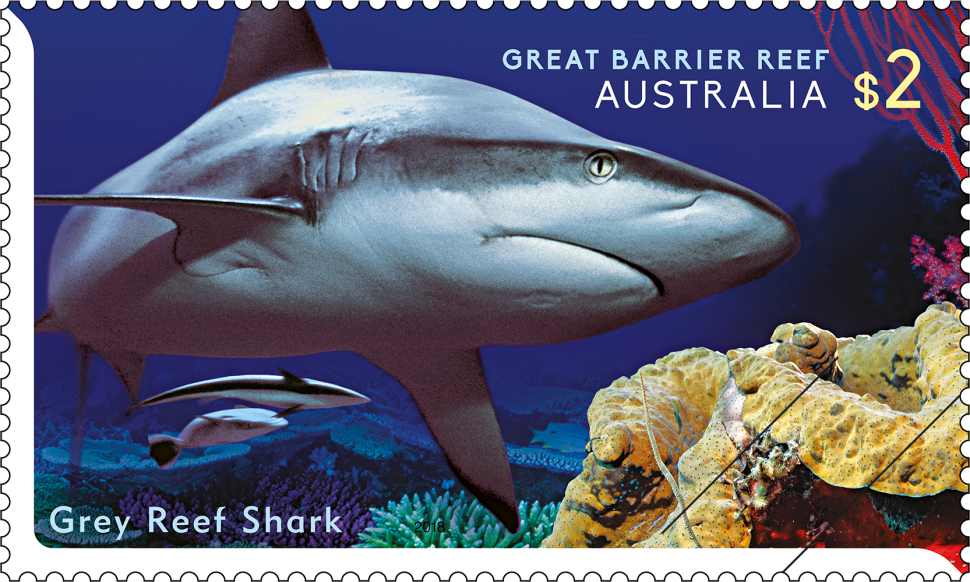
The Grey Reef Shark, one of the most common reef sharks in the Indo-Pacific, is also often seen on the Reef. Generally a coastal, shallow-water species, Grey Reef Sharks are mostly found in depths of less than 60 metres, although they can dive to depths of 1,000 metres. Like other members of its family, the Grey Reef Shark is viviparous, meaning the mother give birth to live young. The lifespan of the Grey Reef Shark is at least 25 years.
This shark has an extremely acute sense of smell. An aggressive predator, the Grey Reef Shark feeds mainly on bony fishes, cephalopods such as squid and octopus and crustaceans like lobster and crab. They are active during the day but activity peaks at night. Many Grey Reef Sharks have a home range on a specific area of the reef. While not especially territorial, Grey Reef Sharks have been known to attack humans.
The stamp photograph is by Jurgen Freund, naturepl.com
This content was produced at the time of the stamp issue release date and will not be updated.
